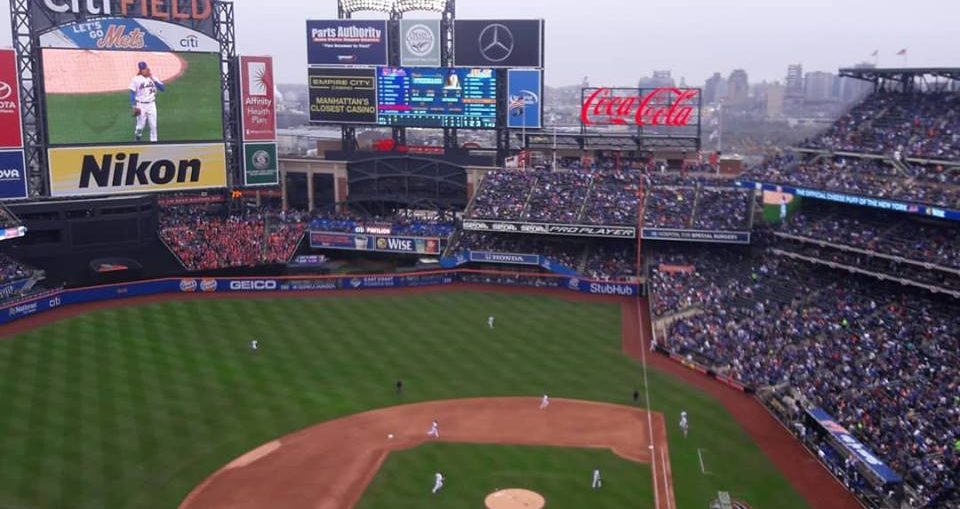
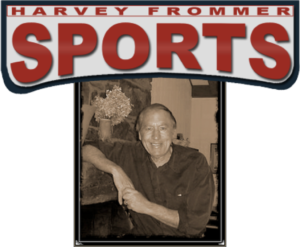
Major League Baseball rightfully celebrates Jackie Robinson Day every April 15, the day he broke the color barrier in 1947.
I met my all-time favorite player twice –once as a teenager and then as an adult. Both moments still stay with me.
HARVEY FROMMER: When school was out, I sometimes went around with my father in his taxi. One summer morning, we were driving in East Flatbush in Brooklyn down Snyder Avenue. My father pointed to a dark red brick house with a high porch.
“I think Jackie Robinson lives there,” my father said. He parked across the street and we got out of the cab, stood on the sidewalk and looked at the house. Suddenly, the front door opened. A black man in a short-sleeved shirt stepped out. I didn’t believe it. Here we were on a quiet street on a summer morning with no one else around.
The man was not wearing the baggy, ice-cream-white-uniform of the Brooklyn Dodgers that accentuated his blackness. He was dressed in regular clothes, coming out of a regular house in a regular Brooklyn neighborhood, a guy like anyone else going out for a bottle of milk and a newspaper.
Then, incredibly, he crossed the street and came right toward me. Seeing that unmistakable pigeon-toed walk, the rock of the shoulders and hips that I had seen so many times before on the baseball field, I had no doubt who it was.
“Hi Jackie, I’m one of your biggest fans,” I said self-consciously. “Do you think the Dodgers are going to win the pennant this year?”
His handsome face looked sternly down at me. “We’ll try our best,” he said.
“Good luck,” I said.”
“Thanks,” he replied.”
He put his big hand out, and I took it. We shook hands and I felt the strength and firmness of his grip. I was a nervy kid, but I didn’t ask for an autograph or try to prolong the conversation. I just walked away down the street.
That was my first personal contact with Jackie Robinson. Years later I came across him in downtown Brooklyn in a Chock Full O Nuts coffee shop. He was the company’s vice president and director of personnel. Now he was heavier, gray-haired, slowed, sitting at the counter. We chatted a bit but the meeting was sadder, even poignant for me to see how this great athlete had been slowed by time and illness.
He did not remember our chance meeting that long ago summer day but I did. Ironically, that coffee shop on Montague Street was close by what had been the offices of the Brooklyn Dodgers where Robinson had his first meeting with Branch Rickey who helped him shatter baseball’s color line.
What follows is a short-hand version of some of the life and times of Jack Roosevelt Robinson. It is all memorable and moving.
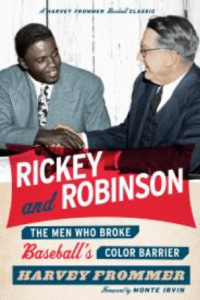
Brooklyn Dodgers
To avoid racist behavior in spring training 1947, Branch Rickey wisely chose Havana as his site for both the Montreal Royals and the Brooklyn Dodgers. Rickey wanted Brooklyn players to see what Robinson was like. They got an eyeful–in a seven-game series at the Nacional Stadium between the two teams he batted an amazing. 625. Robinson very well could have spent a second season in Montreal; his spring training performance of 1947 paved the way for his promotion to the major leagues.
However, not everything was serene despite the best-laid plans of Rickey. At the start, some Dodgers were opposed to a black man being part of their team. Brooklyn manager Leo Durocher defended Jackie Robinson this way “I do not care if the guy is yellow or black, or if he has stripes like a fucking zebra. I’m the manager of this team, and I say he plays. What’s more, I say he can make us all rich. And if any of you cannot use the money, I will see that you are all traded.”
And for good measure “Leo the Lip” added: You want a guy who comes to play. But he doesn’t just come to play. He came to beat you. He came to stuff the damn bat right up your ass.”
With the blue number 42 on the back of his Brooklyn Dodger home uniform, Jackie Robinson, a grandson of a slave and a son of a sharecropper, took his place at first base at Ebbets Field on April 15, 1947.
“Back in the thirties and forties, Joe Louis was the only hero that we ever had. When he won a fight, everybody in Harlem was up in heaven.” On that April day, James Baldwin said, “The large contingent of blacks in the crowd had another hero to be “up in heaven” about, another hero to stand beside Joe Louis.”
Many of the 26,623 at that tiny ballpark on that chilly spring day were not even baseball fans, but they had come out to see “the one” who would break the sport’s age-old color line. Robinson’s wife, Rachel, was there along with the infant Jackie, Jr. Many in the crowd wore “I’m for Jackie” buttons and badges, and screamed each time the black pioneer came to bat or touched the ball.
Jackie Robinson grounded out to short his first time up. He flied out to left field in his second at-bat. He got on base on an error in the seventh inning. He grounded into a double play in his final at-bat of the day.
The Dodgers won the game, 5–3, nipping Johnny Sain and the Boston Braves. For Robinson, it was not the performance he had sought, but the first of his 1,382 major league games was in the record books—and he had broken baseball’s color line forever.
“I was nervous on my first day in my first game at Ebbets Field,” Robinson told reporters later. “But nothing has bothered me since.”
Part sociological phenomenon, part entertainment spectacle, part revolution, part media event—the narrative of Jackie Robinson played out its poignant, dramatic and historic scenes through that 1947 season.
Famed sports columnist Jimmy Cannon called Jackie Robinson “the loneliest man I have ever seen in sports.” That comment was only partly true. Toward the end of the 1947 season, a Jackie Robinson Day was staged at Ebbets Field. He was not a lonely man. Robinson was now a major drawing card rivaling Bob Feller and Ted Williams in the American League.
“I thank you all.” Number 42 said over the microphone in that high-pitched voice. He was presented with gifts which included a new car, a television and radio set, and an electric broiler.
The famed tap dancer Bill “Bojangles” Robinson stood next to Jackie Robinson: “I am 69 years old. But I never thought I would live to see the day when I would stand face to face with Ty Cobb in Technicolor.”
What Jackie Robinson accomplished on the baseball field had never been accomplished in the same way. He had a flash, a flame, a fire that prompted Dodger manager Chuck Dressen who had replaced Leo Durocher, who had moved on to the New York Giants, to say: “Give me five players like Robinson and a pitcher and I’ll beat any nine-man team in baseball.”
At season’s end, playing in 151 of the team’s 154 games, Robinson put up impressive stats and won the Rookie of the Year award.
During his time as Dodger Robinson became close friends with Larry Doby of the Cleveland Indians, the first black baseball player in the American League. Their bond was the shattering of the color barrier in baseball in the same year. The duo talked baseball on the phone and shared experiences about racism.
The motivations of Branch Rickey, the man they called “the Mahatma,” have always been questioned subject to debate. Why did he sign Jackie Robinson? How much of what he did came from a moral conviction that the color line must go? How much came from a desire to make money and field a winning team?
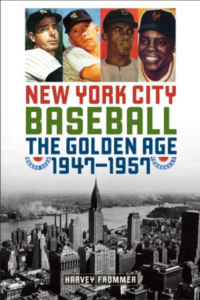
MONTE IRVIN: Regardless of the motives, Rickey had the conviction to pursue and to follow through.
Breaking baseball’s color line enabled Branch Rickey to tap into a gold mine, but he elected not to monopolize that gold mine of talent in the Negro Leagues. Monte Irvin cold have been a Brooklyn Dodger, so could other Negro League greats like Larry Doby, Sam Jethroe, and Satchel Paige and more.
But Rickey had Robinson, Roy Campanella, Don Newcombe and Joe Black, Jim Gilliam and more. He was very much in favor of other teams integrating, too.
Prejudiced major league club owners who had called Rickey complaining, “You’re gonna kill baseball bringing that nigger,” were now asking, “Branch, do you know where I can get a couple of colored boys as good as Jackie and Campy and Newk?”
Jackie Robinson took the abuse: the cut signs by players near their throats, the verbal curses, the spiking attempts, the cold shouldering, and the death threats that came in the mail.
On and off the field that rookie season of 1947, Jackie Robinson made his point and kept making his point. He had come to play. He had come to stay the distance no matter what. At season’s end, playing in 151 of the team’s 154 games, Robinson put up impressive stats and won the Rookie of the Year award.
By 1949, Jackie Robinson was in his third season as a Brooklyn Dodger and was no longer the lone black man on the baseball diamond. Branch Rickey told him he could now let it all hang out. Dodger fans were elated.
“I sat back happily,” Rickey recalled, “knowing that with the restraints removed, Robinson was going to show the National League a thing or two.”
“I told Mr. Rickey that if a pitcher hits me intentionally with a fastball, his ass belongs to me,” explained Jackie Robinson. “And if a second baseman strikes me intentionally, his ass belongs to me. Apparently, the warning was passed down the line. So the word got down the league. They called me names, but I expected those. But nobody hit me intentionally”
RACHEL ROBINSON: It was hard for a man as assertive as Jack to contain his own rage, yet he felt that the end goal was so critical that there was no question that he would do it. And he knew he could do it even better if he could ventilate, express himself, use his own style.
And what a style it was!
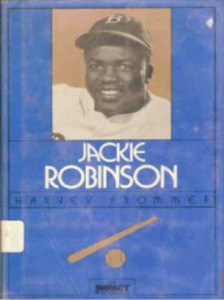
ABOUT HARVEY FROMMER
One of the most prolific and respected sports journalists and oral historians in the United States, author of the autobiographies of legends Nolan Ryan ,Tony Dorsett, and Red Holzman, Dr. Harvey Frommer, a professor for more than two decades in the MALS program at Dartmouth College, was dubbed “Dartmouth’s Mr. Baseball” by their alumni magazine. He’s also the founder of www.HarveyFrommerSports.com and has written extensively about Jackie Robinson. Signed, mint condition books can be obtained from his site.
